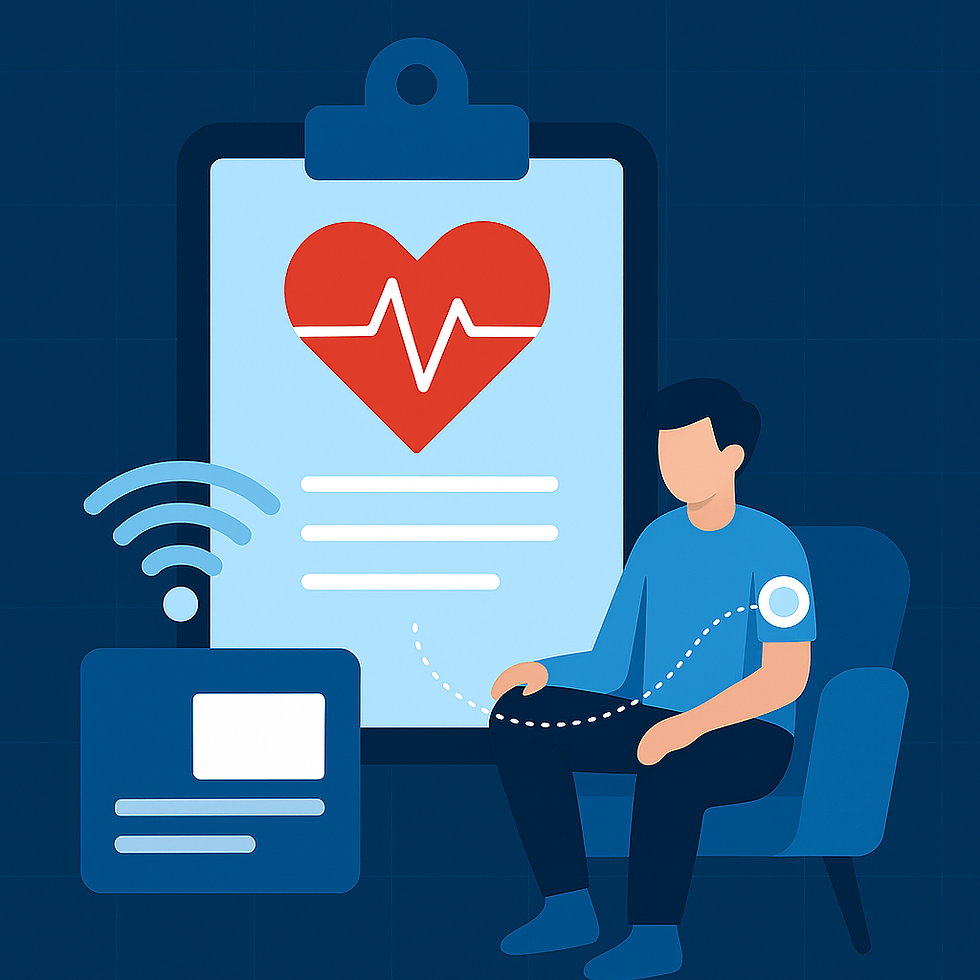AMA Releases CPT® 2026 Code Set: What Every Healthcare Provider Needs to Know
- Modern Medical Billing

- 2 days ago
- 5 min read
The American Medical Association (AMA) has announced the release of the Current Procedural Terminology (CPT®) 2026 code set, marking one of the most significant updates in recent years.
The new code set adds 288 new codes, revises 46, and deletes 84, reflecting the latest medical, surgical, and diagnostic advancements available to patients.
As the backbone of medical billing and data interoperability in the U.S., the CPT code set provides the common language that keeps healthcare documentation consistent, transparent, and accurate across every provider and payer.
CPT® 2026 at a Glance
288 new codes for emerging medical, surgical, and diagnostic services
46 revised codes for improved clarity
84 deletions to remove outdated terminology
418 total changes approved by the CPT Editorial Panel
Effective for use January 1, 2026
According to AMA President-elect Willie Underwood, III, MD, MSc, MPH, “CPT is more than a set of billing codes. It supports data-driven care, research, and innovation that advance patient outcomes and access.”
Why CPT® Updates Matter
The CPT code set isn’t just about billing—it’s about maintaining a uniform medical language that enables:
Seamless data exchange between healthcare systems
Accurate reimbursement and fair payment
Reliable health analytics and benchmarking
Standardized communication between providers, payers, and researchers
Without this shared code structure, the healthcare system would struggle to ensure accessibility, accountability, and interoperability.
For medical practices, keeping billing systems and staff aligned with these annual updates is crucial to avoiding claim denials, reimbursement delays, and compliance issues.
Key Additions and Updates in the CPT® 2026 Code Set
The 2026 code set expands in several fast-growing areas of healthcare — from digital health and AI-assisted services to hearing device innovation and vascular procedures.
1. New Codes for Remote Patient Monitoring (RPM)
To reflect new technologies that allow providers to collect and analyze patient data remotely, the AMA introduced five new RPM codes.These codes capture shorter-duration monitoring (2–15 days within a 30-day period), ensuring billing accuracy for acute or intermittent care needs.
Two additional codes support remote monitoring treatment management after just 10 minutes per calendar month, reducing the threshold from the previous 20-minute requirement.
2. New Codes for Augmentative and Assistive Artificial Intelligence (AI)
AI-assisted healthcare continues to expand, and CPT 2026 now includes several new codes recognizing AI applications that support clinical decision-making.
Examples include:
Coronary Atherosclerotic Plaque Assessment (AI-based coronary CTA analysis)
Perivascular Fat Analysis for cardiac risk assessment
Multi-Spectral Imaging for Burn Wounds to assist in healing evaluation
Detection of Cardiac Dysfunction via AI analysis of ECG or acoustic data
These codes represent a step forward in recognizing AI as a clinical support tool, not a replacement for human expertise.
3. New Codes for Hearing Device Services
Twelve new codes have been introduced to capture innovative hearing device services, focusing on patient-centered care and device integration with personal technologies like smartphones. These codes support:
Visual and dexterity assessments
Device performance validation
Training and psychosocial support
This update aligns coding with modern audiology practices and enhances patient outcomes.
4. Code Overhaul for Leg Revascularization
One of the most significant updates involves a complete overhaul of lower extremity revascularization codes.
The revision includes 46 new codes, replacing outdated ones to better reflect technological advances and shifts toward outpatient settings.These changes improve documentation for procedures that restore blood flow and mobility for patients with chronic limb ischemia and related conditions.
5. Updated Appendices for Behavioral Health and Telehealth
The CPT 2026 release also updates Appendices P and T, adding behavioral health codes that support audio-video and audio-only care delivery.These updates expand telehealth flexibility, helping patients in rural, underserved, and vulnerable communities access essential behavioral health services.
Category III Codes and Innovation Growth
The CPT Editorial Panel continues to encourage medical innovation, with Category III codes accounting for more than a quarter (27%) of the new additions.These codes support emerging technologies, pilot programs, and research-based services — ensuring that cutting-edge care can be accurately documented and reimbursed.
Preparing for January 1, 2026: What Practices Should Do
To ensure a smooth transition to the 2026 CPT code set, healthcare organizations should:
Update EHR and billing software to include all new, revised, and deleted codes.
Train clinical and billing staff on the new code definitions.
Audit high-volume codes to confirm replacements and prevent denials.
Coordinate with payers to verify when system updates take effect.
Partner with an RCM expert to ensure timely implementation and compliance.
Notable New Code Categories & Examples
Remote Patient Monitoring (RPM) & Digital Health
Five new codes report monitoring services over 2–15 days within a 30-day period, and two new codes report treatment management after 10 minutes of service/month (down from 20 minutes). Medical Economics+2American Medical Association+2
Augmentative & Assistive Artificial Intelligence (AI)
Examples:
Assessment of coronary atherosclerotic plaque via software analysis of coronary CT angiography. American Medical Association+1
Perivascular fat analysis to assess cardiac risk via AI-driven tools. Medical Economics
Multi-spectral imaging to evaluate burn wound healing through algorithmic classification. American Medical Association+1
Hearing Device & Audiology Service Codes
Twelve new CPT codes replace legacy codes (92590-92595) and address: candidacy evaluation, device selection, fitting, post-fitting, verification, and assistive tech. ASHAExamples of new codes:
Lower Extremity Revascularization Codes
A comprehensive overhaul, with 46 new codes, reflecting technology advances and outpatient settings for leg revascularization. American Medical Association
Category III & Proprietary Lab/Diagnostics
About 27% of new codes cover proprietary laboratory analyses and 27% cover Category III (emerging service) codes. American Medical Association+1
🔍 What This Means for Your Practice
If you offer remote monitoring, AI-augmented diagnostics, hearing device services, or vascular interventions, these new codes can impact how you document, code, and bill.
Even if not directly using the new codes, the update signals a shift toward digitally enabled services, value-based care, and emerging technologies — you’ll want your billing and documentation processes ready.
Training staff, updating EHR/billing software, and reviewing documentation workflows now will avoid downstream denials or underpayments.
How Modern Medical Billing Helps Providers Transition Smoothly
At Modern Medical Billing, we specialize in helping healthcare providers stay ahead of industry changes.Our RCM and billing teams ensure every CPT and ICD update is integrated into your workflow before the effective date, reducing errors and optimizing cash flow.
Our Services Include:
Full Revenue Cycle Management (RCM) starting at just 1.99%
Verification of Benefits (VOB) and prior authorizations
Accurate coding and charge capture with CPT 2026 compliance
Denial management and A/R recovery
HIPAA-compliant virtual assistance and reporting
By staying ahead of CPT changes, we protect your practice’s revenue and compliance — so you can focus on patient care, not paperwork.

As CEO of Modern Medical Billing, I believe compliance and innovation go hand in hand. With each CPT update, we’re reminded of how essential it is for providers to have partners who understand both the business and the humanity of medicine.
Our team is ready to guide you through CPT 2026—and every change that follows—with precision, transparency, and care.
Let’s build a smarter, simpler future for healthcare together.
Yadira M.
CEO | Providers Medical Billing & Modern Medical Billing










Comments